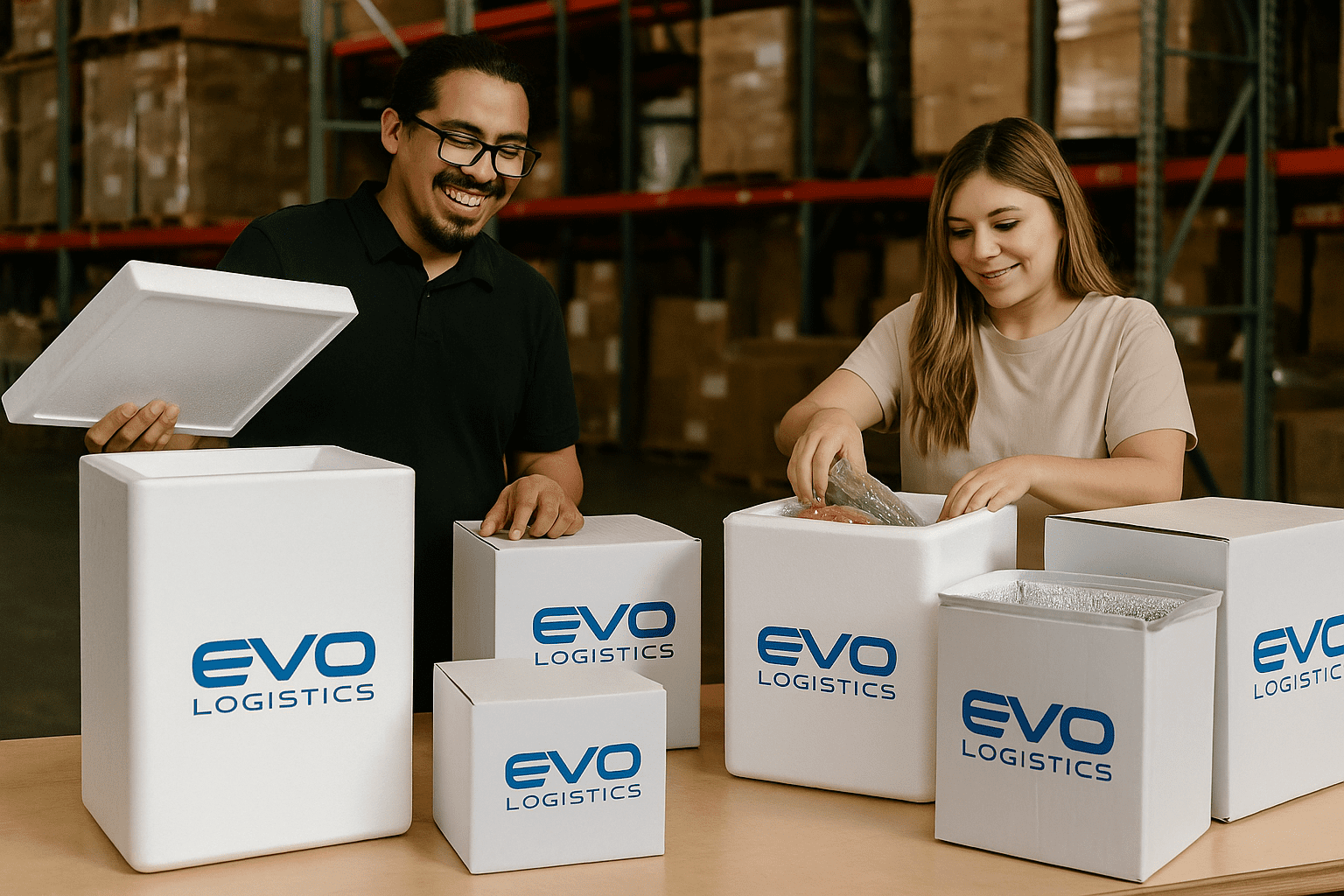Before Your First Refrigerated Cargo Shipment

Shipping refrigerated cargo for the first time can feel overwhelming. Whether you’re moving perishable foods, life-saving medications, or delicate cosmetics, one thing is certain—refrigerated cargo shipment is more than just loading a truck and setting the thermostat. In fact, tiny oversights can cause big damage, not only to your goods but to your business’s reputation.
To set you up for success, this guide explores the five most common mistakes made during a first-time refrigerated cargo shipment—and how to avoid them like a pro.
1. “Refrigerated” Doesn’t Mean One Single Temperature
It’s easy to assume that all cold products need the same conditions. However, different items require different temperatures.
For example:
- Leafy greens stay fresh at about 32–36°F (0–2°C)
- Dairy products do best around 39°F (4°C)
- Some cosmetics need to stay between 50–59°F (10–15°C)
EVO Tip: Always check the exact temperature your product needs and make sure your logistics partner understands it.
2. Packaging Matters Just as Much as Cooling
Many first-timers focus on temperature but overlook packaging. As a result, even well-cooled cargo can spoil if it’s not packed right.
Poor packaging can lead to:
- Temperature leaks
- Moisture problems
- Damage from movement
EVO Tip: Choose insulated boxes, cooling gel packs, and tight seals designed for cold shipping.
3. Timing Can Make or Break a Shipment
Even short delays can cause real damage. For instance, customs checks, slow unloading, or a warm delivery dock can all put your cargo at risk.
EVO Tip: Choose a logistics provider that offers live tracking and quick updates. That way, you’re ready to respond fast if something goes wrong.
4. The Paperwork Might Be More Complicated Than You Expect
Shipping cold cargo isn’t just about temperature—it’s also about compliance.
Depending on the product and destination, you may need:
- Temperature logs
- Safety certificates
- Special permits
EVO Tip: Ask about all the required paperwork before you ship. This helps avoid delays and fines.
5. Mistakes Can Be Expensive
Some believe that a small error won’t matter—but with cold cargo, it often does. Spoiled goods don’t just cost money. They can also hurt your brand and your customer relationships.
EVO Tip: Cold cargo insurance is worth it. Also, consider doing a test shipment if it’s your first time.
Conclusion
Shipping cold products isn’t only about refrigerated trucks. It’s about good planning, the right tools, and clear communication. When you work with EVO Logistics, we make sure your products arrive fresh, safe, and on time.
Centrally Located Cold Storage Solutions
Interested in learning about how our cold storage facilities can help your business? Reach out to our team today!

Get in touch with us today to learn more about how Evo Logistics’ climate controlled storage facilities can help your business thrive in the frozen storage logistics industry.
Our team understands the importance of being committed to ensuring the quality of our customer’s product is at its best throughout the shipping process. Our dedicated staff are trained to monitor and operate around the clock 24 hours a day, 365 days a year. With a focus on fast and timely delivery along with GPS tracking, we work to provide consistent satisfaction to our customers.




